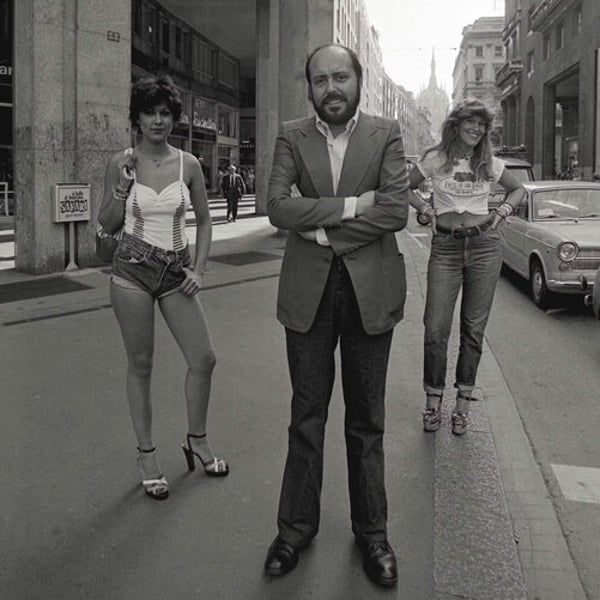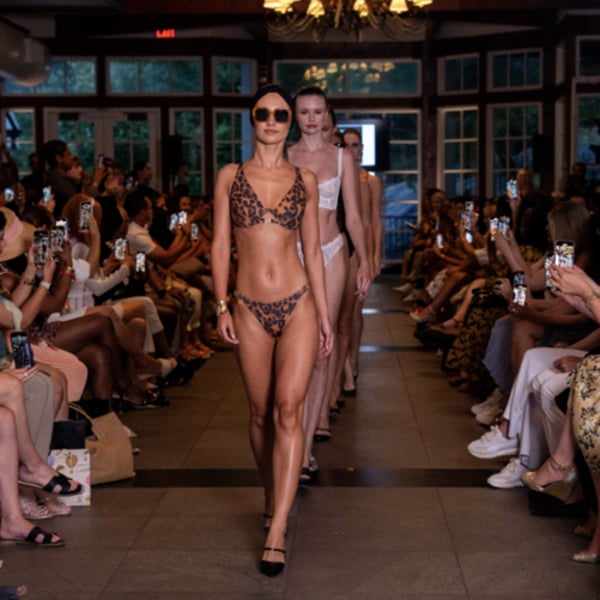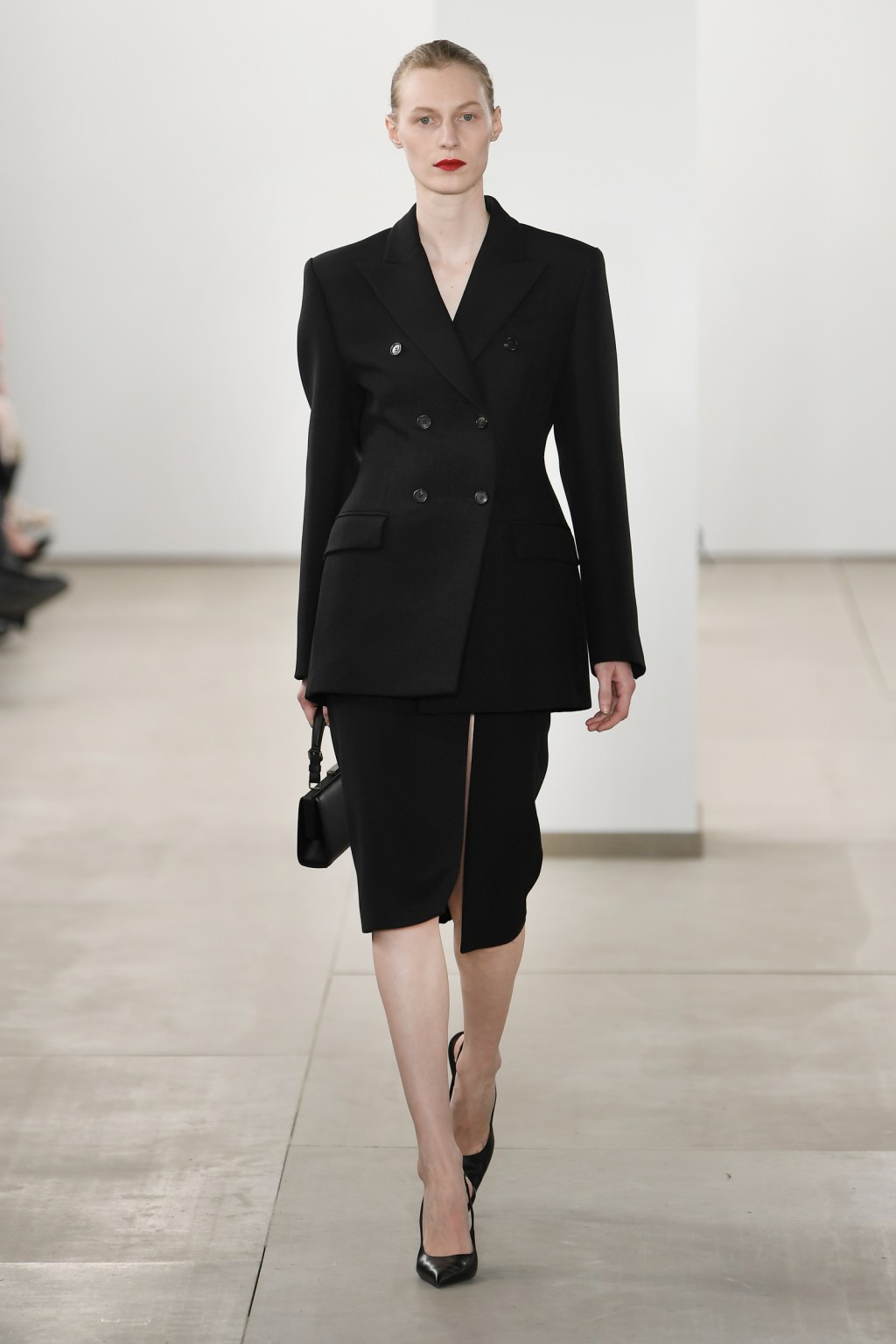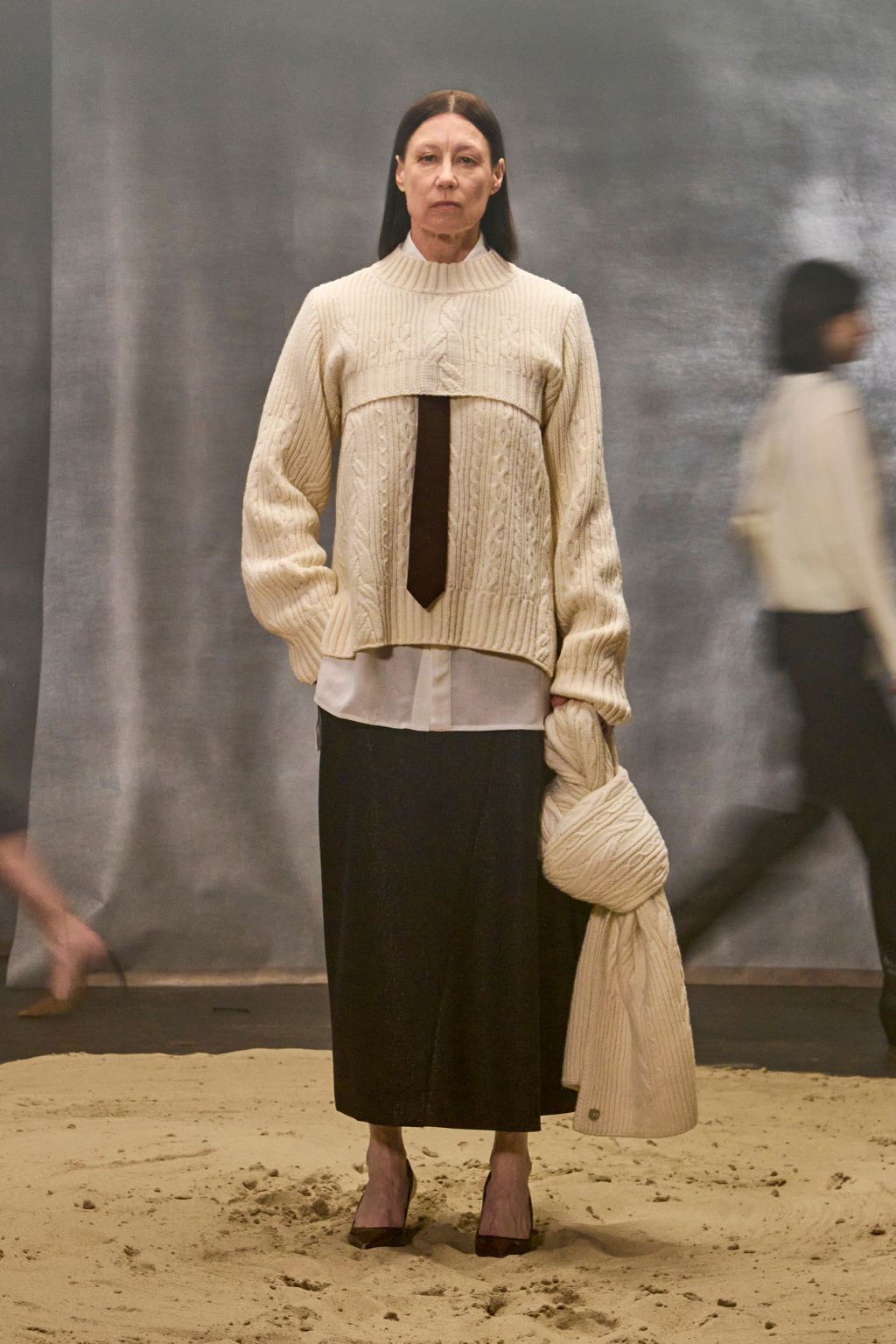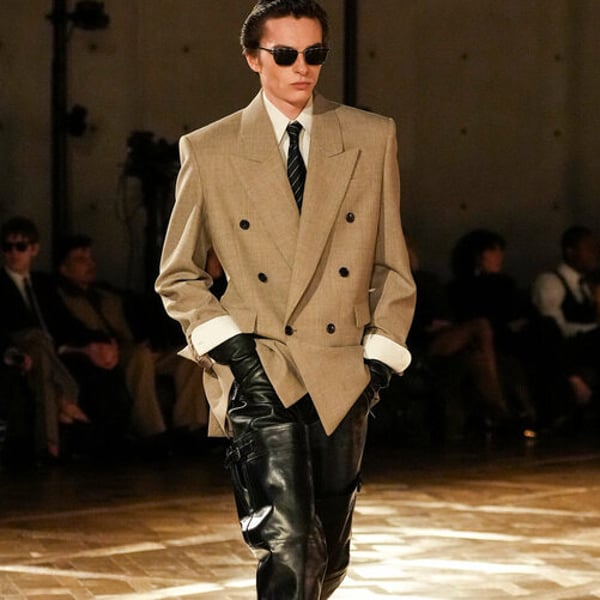Translated by
Nicola Mira
Published
November 7, 2024
Influential Italian art critic Gillo Dorfles once called Elio Fiorucci “the Duchamp of Italian fashion.” To discover the different facets of the effervescent and unconventional Italian designer, his fans can now visit the Triennale design museum in Milan, which dedicates a major exhibition to this popular fashion icon and innovative and versatile designer, who died in 2015. Fiorucci's retrospective, the first of its kind, is open until March 16. It is an exciting and experiential exhibition that reveals several hitherto unpublished documents about Elio Fiorucci himself, his personality and his work.
The exhibition contains a large number of photographs, drawings, videos, sound recordings, installations, gadgets and, of course, clothing and accessories. The recordings include, in particular, excerpts from the 17-hour audio biography that Elio Fiorucci recorded when he was 80 years old. They can be heard through telephones and old tape recorders scattered throughout the exhibition, as if Fiorucci himself were privately telling his life story to exhibition attendees. visitors.
The organizers have been able to obtain material from other archives belonging to some of Fiorucci's collaborators, and in particular to his family and his label, acquired in 2022 by the Swiss businesswoman Dona Bertarelli, through her family office. The documents allow visitors to glimpse lesser-known instances of Fiorucci's past, combining three separate threads: a more private and informal journey following the designer's own voice, his commercial and cultural activities, and his fashion.
“It is not an exhibition about fashion, but about 'modalogy', that is, all the ecosystems that flourish around the fashion industry and that allowed Elio Fiorucci to have fun, improvise and contribute to his work. Through a series of encounters and projects, he created a completely new way of engaging with fashion,” said Judith Clark, curator of the exhibition, speaking to FashionNetwork.com.

Elio Fiorucci was one of the first to break the rules of the fashion industry, fusing fashion, art and design and creating a non-hierarchical approach open to all. He was able to surround himself with some of the best creative minds of his time, especially from the 1970s and 1980s: architects and designers like Alessandro Mendini, Ettore Sottsass and Andrea Branzi, graphic designer Italo Lupi, pop art giants like Basquiat, Andy Warhol. and Keith Haring, who curated the decor of his iconic Via Passerella store in Milan, as well as Jean Paul Gaultier and Madonna.
The exhibition is a treasure, with gems such as the essay written by 12-year-old Fiorucci, in which the young dreamer from the small town of Piona, near Lake Como, imagined his future. He saw himself pursuing a retail career, describing commerce as a game, a hobby and a passion. The essay, placed on a desk in Fiorucci's former classroom, opens the exhibition, described by Fabio Cherstich, who designed the stage, as a “kind of kaleidoscope full of all kinds of sensations.”
Another find is a letter written in 1979 by a group of Sicilian high school students, all “die-hard Fiorucci fans,” pleading with the designer to send them some of the “coolest” ones. [Fiorucci] stickers” and “as many as possible.”
“For me, this document testifies to the surprising success of Elio Fiorucci, much more than a newspaper headline. He was marketing way ahead of his time. Stickers, gadgets and pop stars playing in his stores – he was a pioneer of co-marketing,” Clark said.
The exhibition displays, for example, a collection of clothing labels, each with a different shape and format, like stamp-sized images. In 1973, Elio Fiorucci invented 'fashion jeans', making this classic work garment sexy and very wearable for women too. He was also one of the first to create a fashion school together with his brand.

In 1976, when Fiorucci opened his first store in Milan, introducing Italy to the successful Swinging London style through an unprecedented range of clothing, accessories, gadgets, trinkets, drinks, etc., he effectively invented the concept store formula.
In 1976, he opened another revolutionary store on Milan's via Torino, with a space for live performances and a restaurant open until 2am, the latter for the first time in the city. The Triennial exhibition shows the entire design process of the restaurant, right down to the menu sketches. The same brightly colored pop-art vibe was adopted for the graphics on the cover of the company's 1976 financial report, decorated with the design of an airplane flying over a Mediterranean panorama with a bright sky in the background.
One of the most interesting finds in the exhibition is the section on 'Fiorucci Dxing', an experimental project focused on image research, in which the designer's team studied anthropology, contemporary trends and thinkers and philosophers such as Theodor W Adorno and Roland Barthes. “They also recorded videos of what they saw during their travels around the world. This research project was the creative heart of the label. Behind [Fiorucci’s] pop-art objects and graphics, there was depth, thought and a message,” Cherstich concluded.
Copyright © 2024 FashionNetwork.com All rights reserved.

